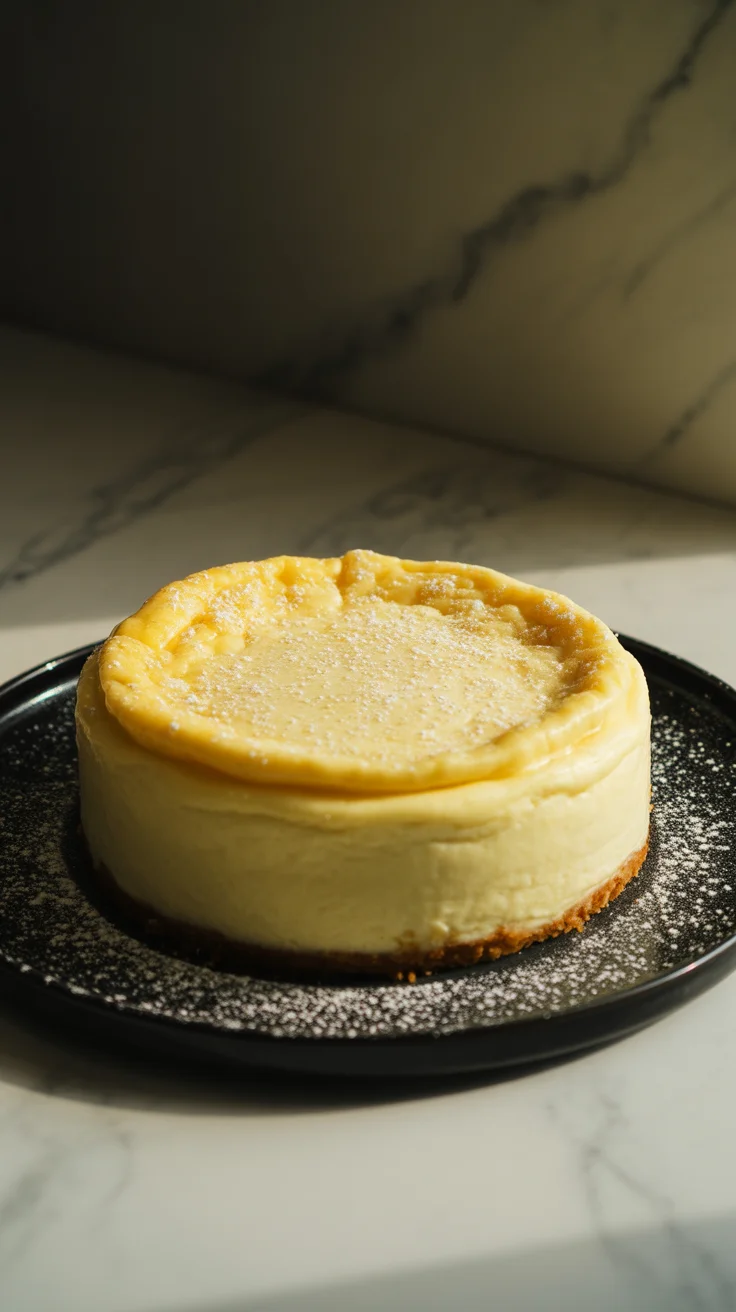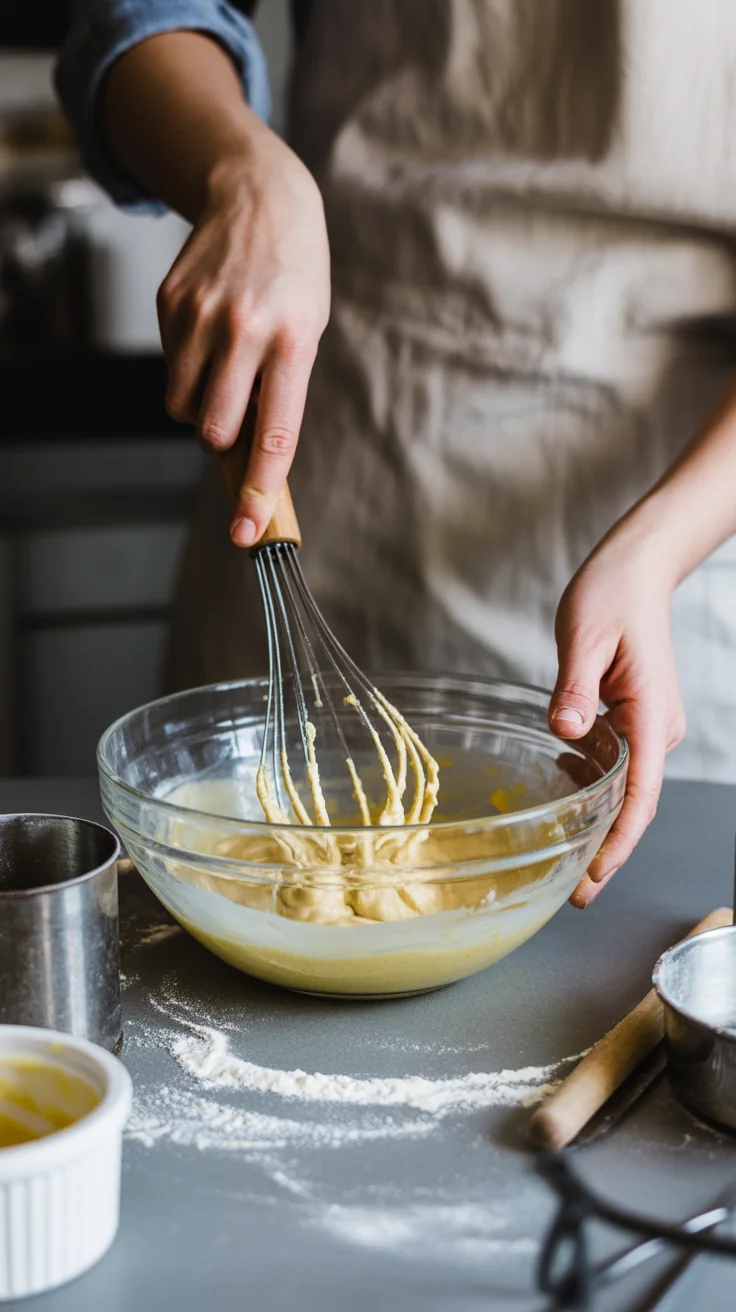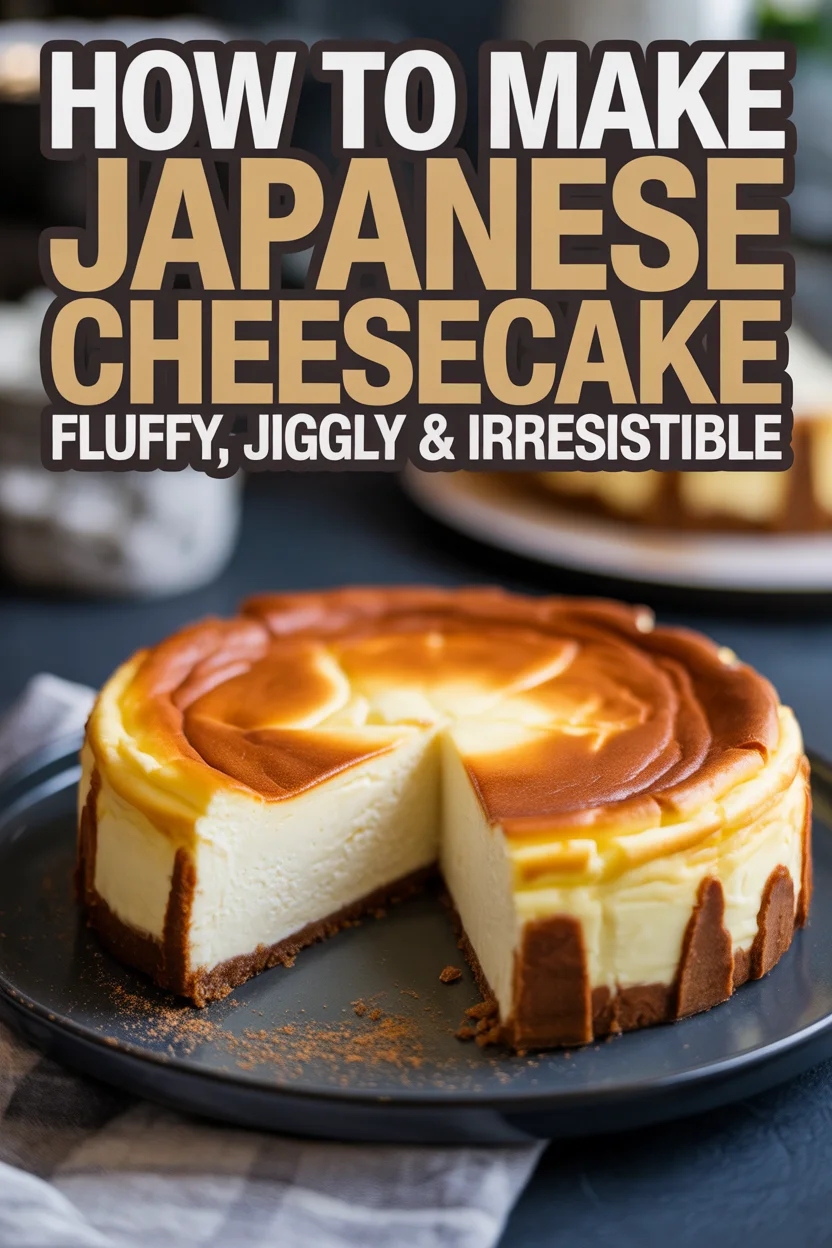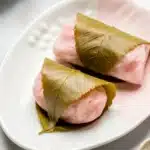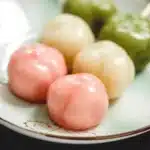Japanese Cheesecake has this ridiculously fluffy, jiggly thing going on that regular cheesecakes just don’t have. Ever stared at one on Instagram and thought, why does mine always come out like a dense brick instead of a marshmallow cloud? Been there. Before I finally nailed it, I must’ve baked at least five cheesecakes that looked more like pancakes. Yup, there’s a trick, or three. Let’s tackle this together, so you can skip the flops and get straight to the real deal.
Key Ingredients for a Fluffy, Jiggly Japanese Cheesecake
Print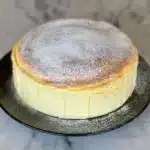
Japanese Cheesecake
- Total Time: 1 hour 50 minutes
- Yield: 8 servings
Description
This Japanese Cheesecake is known for its irresistibly fluffy and jiggly texture, making it a light and delightful dessert that melts in your mouth.
Ingredients
Main Ingredients
- 8 oz Cream Cheese (Use block, not whipped)
- 4 large Eggs (Room temperature for best results)
- 1/4 cup Whole Milk (Avoid skim milk)
- 2/3 cup Sugar (Split for meringue and batter)
- 1/4 cup Cake Flour (For a lighter texture)
- 1 tbsp Cornstarch (Helps with stability)
- 1 tsp Lemon Juice (Enhances flavor)
- 2 tbsp Unsalted Butter (Melted for batter)
Instructions
Preparation
- Preheat oven to 320°F (160°C). Grease and line a deep round pan with parchment.
- In a saucepan, melt butter and cream cheese with milk over low heat. Stir until smooth, no lumps. Let it cool for a moment.
- Sift cake flour and cornstarch into your cream cheese mixture. Add egg yolks, half of the sugar, lemon juice, and mix gently.
Meringue Preparation
- In a clean bowl, whip egg whites and the rest of the sugar until soft, glossy peaks form.
Combine and Bake
- Fold the meringue into your cream cheese batter gently three additions, super careful.
- Pour into pan. Tap gently on the counter to pop any big bubbles.
- Place your pan in a larger roasting pan and fill with hot water (bain-marie).
- Bake for 60 minutes at 320°F, then 20 minutes at 280°F (135°C) until set and slightly golden.
- Turn off the oven, let sit inside with the door cracked for 10 to15 minutes before removing.
Notes
For best results, use high quality ingredients and ensure all ingredients are at room temperature. Be gentle when folding the meringue to maintain fluffiness.
- Prep Time: 30 minutes
- Cook Time: 1 hour 20 minutes
- Category: Dessert
- Cuisine: Japanese
If you want Japanese Cheesecake to do that satisfyingly wobbly dance, you’ve gotta get your ingredients right. Don’t overcomplicate this part, by the way. You need block cream cheese (not the whipped tub stuff), real eggs (I tried using carton egg whites once…nope), whole milk (not skim), plain sugar, a touch of cornstarch, and a splash of lemon juice. That’s your solid crew.
Personally, I grab unsalted butter and fine cake flour, nothing fancy. And the eggs? They need to be room temp, or else your meringue will act up. Pro tip: buy the best cream cheese you can swing at your grocery store, ’cause it’s the main flavor. Don’t forget to weigh your ingredients if possible, especially for the flour. The margin for error is slim.
Choosing the Right Flour, Dairy, and Flavor Add-Ins (Matcha, Chocolate, Strawberry)
Some people grab whatever flour is in the cupboard, but trust me, cake flour is your friend for lightness. All-purpose makes things heavier. For dairy, stick with real whole milk and cream cheese. Once, I tried low-fat options, just bland and dry. Never again.
If you’re feeling extra, you can toss in matcha powder to turn your Japanese Cheesecake grassy and delightful (in a good way). For chocolate lovers? Just melt some quality chocolate into the batter. I’ve even swirled in strawberry puree on top before baking. Makes it look like you bought it from a five-star restaurant. Just don’t go overboard with add-ins, or it’ll weigh your cake down. Less is more.
Why the Meringue Method Is the Secret to Airy Texture
Here’s where people go rogue without realizing it. Japanese Cheesecake gets all its signature fluffiness from whipped egg whites, meringue! And if your meringue is off, forget about fluff.
I always separate my eggs when cold, then let them warm up. A pinch of cream of tartar stabilizes the whites, but it’s not mandatory. Whip the egg whites just until they form soft, glossy peaks that gently hold their shape. Not stiff like shaving cream, not runny either. If you over-whip your meringue, your cake will crack. Under-whip? It turns dense. This step literally decides if your cake will bounce like a trampoline or flop like a tired pillow. Be patient!
Step-by-Step Japanese Cheesecake Recipe (Beginner-Friendly Guide)
Alright, let’s make this happen.
- Preheat oven to 320°F (160°C). Grease and line a deep round pan with parchment.
- In a saucepan, melt butter and cream cheese with milk over low heat. Stir until smooth, no lumps. Let it cool for a second.
- Sift cake flour and cornstarch into your cream cheese mixture. Add egg yolks, sugar (half of it), lemon juice, and mix gently.
- In a clean bowl, whip egg whites and the rest of the sugar until soft, glossy peaks form.
- Fold the meringue into your cream cheese batter gently, three additions, super careful. See more on folding below!
- Pour into pan. Tap gently on the counter to pop any big bubbles.
- Place your pan in a larger roasting pan and fill with hot water (bain-marie time).
- Bake 60 minutes at 320°F, then 20 minutes at 280°F (135°C) until set and very slightly golden. Turn off oven, let sit inside with door cracked for 10–15 minutes before moving out.
Smells good already, right?
| Ingredient | Amount | Notes |
|---|---|---|
| Cream Cheese | 8 oz (226 g) | Use block, not whipped |
| Eggs | 4 large | Room temperature for best results |
| Whole Milk | 1/4 cup (60 ml) | Avoid skim milk |
| Sugar | 2/3 cup (135 g) | Split for meringue and batter |
| Cake Flour | 1/4 cup (30 g) | For a lighter texture |
| Cornstarch | 1 tbsp (8 g) | Helps with stability |
| Lemon Juice | 1 tsp (5 ml) | Enhances flavor |
| Unsalted Butter | 2 tbsp (30 g) | Melted for batter |
Mastering the Bain-Marie (Water Bath) Baking Technique
A lot of folks skip the water bath or just splash some water around the cookie sheet. Not the same thing. The real deal: fit your cake pan inside a bigger one, pour hot water halfway up, then slide into the oven. Why? Steam keeps the cake moist and helps that dreamy jiggle happen. No dry crust or rubbery bottom.
Some days I use foil around the pan to guard against leaks, ’cause watery batter is a heartbreak. If you’re nervous, practice with an empty pan first. Trust me, don’t skip this bit. Every time I got lazy, my cakes looked sad and wrinkly.
How to Fold Meringue into Cheesecake Batter Without Deflating It
This part stresses people out, but it’s honestly kinda relaxing once you nail it. You just want to scoop a third of the meringue into the thick yolk mix, go around the bowl with a spatula, then under and up through the middle.
Don’t stir! Stirring = flat, sad cheesecake. Gently fold in the next third. Again, go slow, work in circles, cut through, repeat. You’re aiming for a batter that stays fluffy but isn’t streaky with whites. Once, I went too hard and everything collapsed, ended up like cheesecake fudge. Edible, but disappointing.
Once it’s all mixed, pour it in the pan right away. Don’t let it sit around, or the bubbles will die. This step, seriously, makes all the difference.
Exact Oven Temperatures and Baking Times for Perfect Results
Every oven has its own personality, I swear. For Japanese Cheesecake, 320°F (160°C) for the first hour is pretty standard, but then I always drop it to 280°F (135°C) for the last 20 minutes. Keeps it pale and tender.
If your oven bakes hot (mine runs like a furnace), check at the 50-minute mark. The top should be only light gold, not tan or brown. Underbaked? Wobbly in the middle, like you poked pudding. Overbaked? Dry, splits everywhere, not even a jiggle in sight.
Let it cool in the oven, door cracked, for at least ten minutes, nobody likes a cake that shrinks out of fear. Patience is rewarded here.
Common Mistakes and How to Fix Them (Cracks, Deflating, Raw Centers)
Man, I’ve messed these up more times than I wanna admit. Here’s what goes south and how to dodge it next time:
If your Japanese Cheesecake cracks, it’s usually from a hot oven or over-whipped egg whites. Next time, lower your oven temp or keep an eye on the meringue. If it sinks or deflates, you probably stirred too hard when folding the whites. Use a gentle wrist. Raw centers? The bain-marie may not have enough water, or your oven’s running cool. Give it a quick skewer test; it should come out clean-ish, no wet batter sticking
A quick tip that saved a TON of my cheesecakes: let your cake cool in the oven, door cracked, for a while. Stops sudden temp drops that cause big cracks.
“I tried this Japanese Cheesecake method and finally got the wiggle! My first couple attempts were flat, but folding super gently and using a proper water bath totally changed the game.” Maya, home baker
Flavor Variations to Try: Matcha, Chocolate, and More
Japanese Cheesecake is a blank slate, dare I say it. Ever stirred in some matcha powder for a pop of green? Taste is nutty, grassy, but still impossibly light. If you like it sweeter, swirl in a bit of chocolate or cocoa into the batter. I’ve even added a handful of crushed berries for a summer spin.
Honestly, my favorite is matcha, looks fancy, tastes grown-up. For birthdays, I’ll sometimes drizzle a little strawberry puree on the plate. If you want café vibes (without spending $9 a slice), this is it. You could even toss in citrus zest, trust me.
How to Serve Japanese Cheesecake for the Best Flavor and Texture
This part? Actually meaningful for Japanese Cheesecake. Serve it slightly chilled or at room temperature, never hot out of the oven. Flavors bloom as it sits, like magic.
Here’s what I usually do:
- Dust lightly with powdered sugar for classic charm (makes it “Instagram official”)
- Top it off with a handful of fresh berries or a dollop of whipped cream for a simple, elegant touch.
- Slice with a hot, wet knife for clean edges, no sticking, thank me later
Oh, and let the cake rest a few hours after baking. It gets tastier…I swear it does.
Storing and Freezing Japanese Cheesecake (Does It Still Jiggle?)
You made it. Now don’t let it dry out. Wrap leftovers tightly (I double-wrap with cling film). Pop it in the fridge, where it’ll last 3–4 days easy. The jiggle stays, though it gets a tiny bit firmer. Don’t worry, still mega fluffy.
You can freeze slices too. Wrap, then freeze up to a month, thaw overnight in the fridge. Texture does change, a little less bounce, but still completely delicious. Avoid re-freezing, though, once is enough.
Common Questions
Line the pan with parchment all around. Grease every inch. I sometimes use a springform pan, but still line that too.
The edges set, and the center should wobble like Jell-O. A wooden skewer comes out mostly clean with a few moist crumbs.
Yes, swap cake flour for a gluten-free blend or potato starch. Texture will be close, not exactly the same, but worth trying.
Totally normal! All soufflé-style cakes settle a smidge. If it shrinks a lot, try a gentler cooling process next time.
Absolutely! Whip those egg whites with anything you’ve got. Just make sure you reach those glossy peaks.
Final Jiggle: Give Your Japanese Cheesecake a Shot
Look, if I can pull off Japanese Cheesecake with my average oven and constant distractions (toddlers, anyone?), you can too. Don’t get discouraged by the details, it’s all about gentle folding, the right oven temp, and having fun with flavors. The payoff? Friends telling you it’s the lightest, fluffiest dessert ever. If you want even more japanese recipes, check out our pinterest page. Send a pic if you try it, I wanna see that wiggle!
